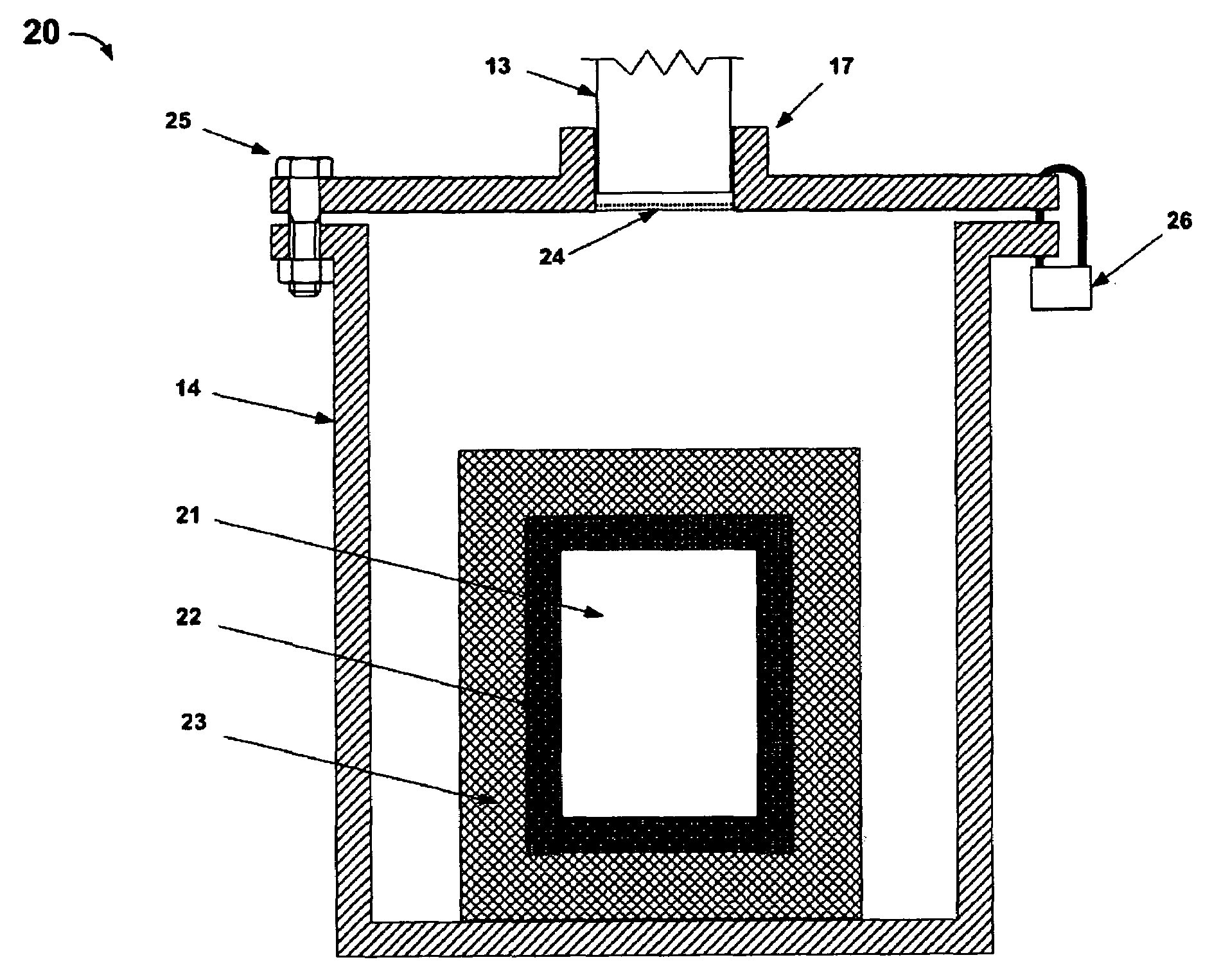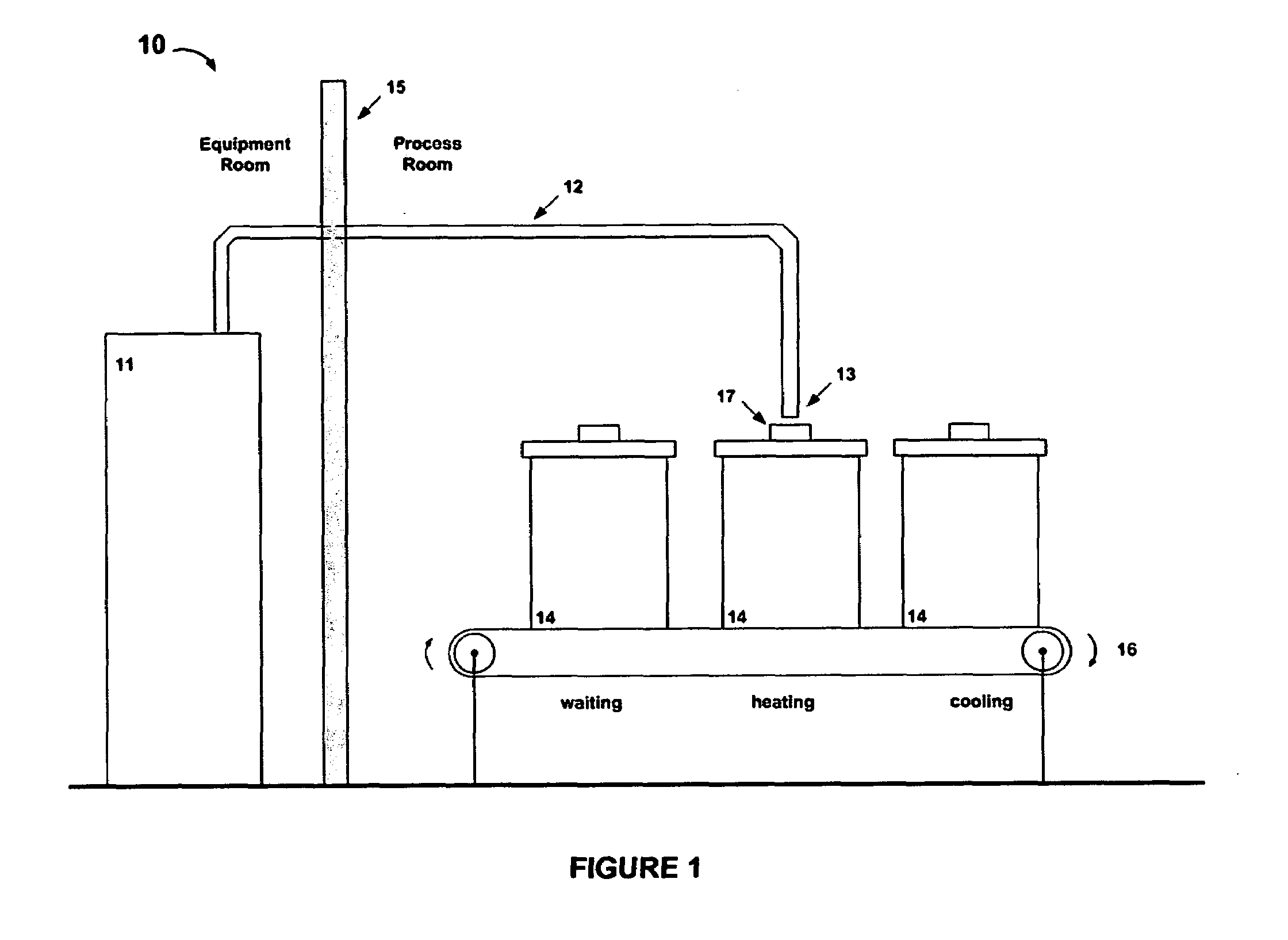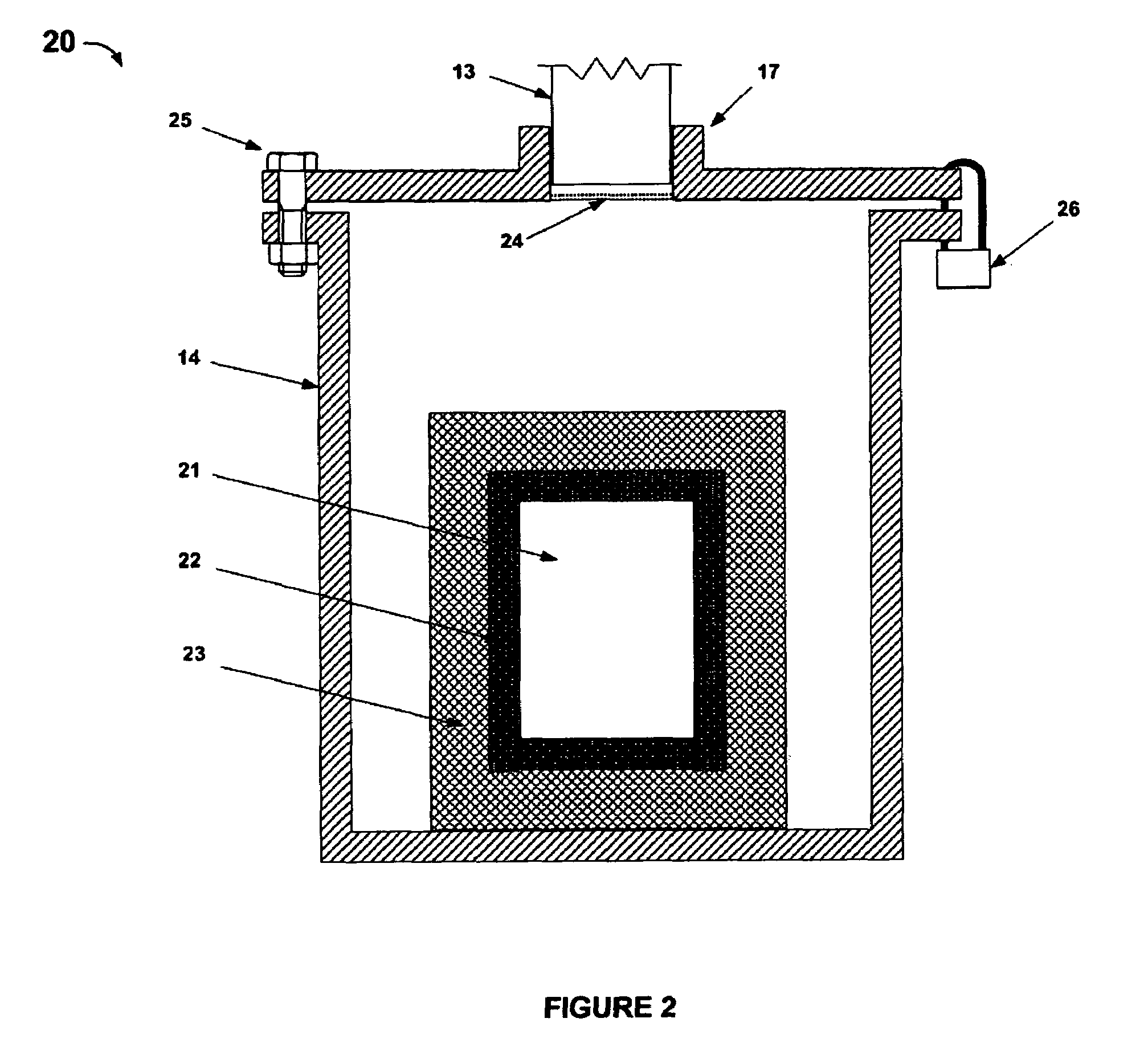Modular microwave processing system
a processing system and module technology, applied in microwave heating, electrical/magnetic/electromagnetic heating, electrical apparatus, etc., can solve the problems of time and laborious process of opening, securing the door, pumping and backfilling, venting, and opening the door
- Summary
- Abstract
- Description
- Claims
- Application Information
AI Technical Summary
Benefits of technology
Problems solved by technology
Method used
Image
Examples
example 1
[0031]Referring to FIG. 1, the general layout of the invention is shown at 10. A microwave power source 11 provides microwave power via transmission line 12 to the output point 13. Modular process chambers 14, three of which are shown, have been pre-assembled and sealed.
[0032]Each chamber 14 has an interface device 17 configured to engage transmission line output point 13 whereby microwave power enters process chamber 14. Each process chamber 14 contains the workpiece to be heated, along with any desired fixture, molds, insulation, etc. The individual chambers 14 are transported, either individually (on casters, for instance) or on a conveyor (as shown schematically at 16), so that while one chamber is being actively heated, others may be waiting or cooling. Control of the atmosphere within each chamber 14, such as evacuation, backfilling, venting, etc., may be carried out during the waiting or cooling stages, thereby maximizing the time that microwave source 11 is utilized.
[0033]Th...
example 2
[0034]Referring to FIG. 2, an embodiment of the inventive process chamber 14 is shown in cross section at 20. Workpiece 21 in this case is contained in crucible 22, which in turn may optionally be surrounded by an insulating casket 23, hybrid heating materials, or other thermal management components, as are well known in the art of microwave processing. In this example, interface device 17 comprises a raised flange or boss to mechanically engage waveguide output point 13 and a dielectric window 24, through which microwave power enters chamber 14. Window 24 is preferably secured in place by brazing. The top of chamber 14 is secured to the body by bolts 25, lock 26, or other conventional means. The interface device may optionally contain additional features (not shown) intended to suppress leakage of microwave power from the area where the waveguide meets the interface device. These features may include gaskets, metal finger stock, steel braid, or other structures as are familiar to m...
example 3
[0035]Illustrated at 30 in FIG. 3, an embodiment of the microwave transmission line of the present invention is shown in the expanded view of the top of chamber 14. The microwave waveguide is inserted and sealed using electromagnetic gaskets 31 or microwave chokes as are well known in the art of microwave processing. A mechanical switch 34 is located proximate to the waveguide, and this switch is part of a safety interlock system that prevents the microwave power feed from being energized unless the chamber 14 is securely engaged at the end of the feed.
[0036]Those skilled in the art of microwave system design will appreciate that microwave power may be transmitted via a waveguide such as that shown in FIG. 3 or may alternatively be transmitted via a coaxial transmission line. In the latter case, the interface device will comprise a coaxial feedthrough with an antenna structure or feed horn integral with chamber 14, whereby microwave power from a coaxial feed line will be effectively...
PUM
 Login to View More
Login to View More Abstract
Description
Claims
Application Information
 Login to View More
Login to View More - R&D
- Intellectual Property
- Life Sciences
- Materials
- Tech Scout
- Unparalleled Data Quality
- Higher Quality Content
- 60% Fewer Hallucinations
Browse by: Latest US Patents, China's latest patents, Technical Efficacy Thesaurus, Application Domain, Technology Topic, Popular Technical Reports.
© 2025 PatSnap. All rights reserved.Legal|Privacy policy|Modern Slavery Act Transparency Statement|Sitemap|About US| Contact US: help@patsnap.com



